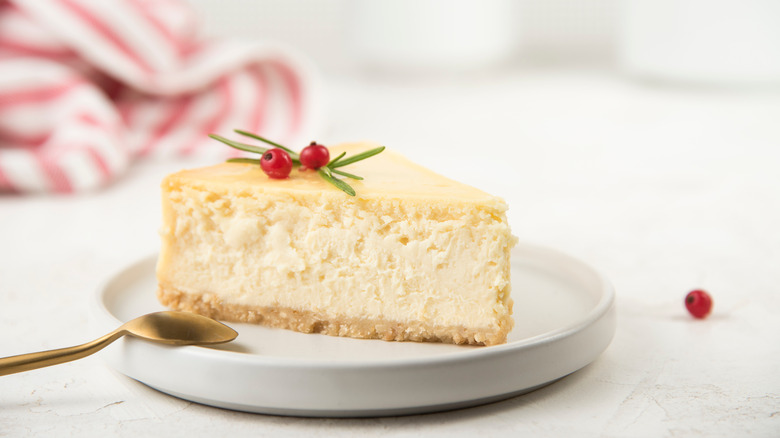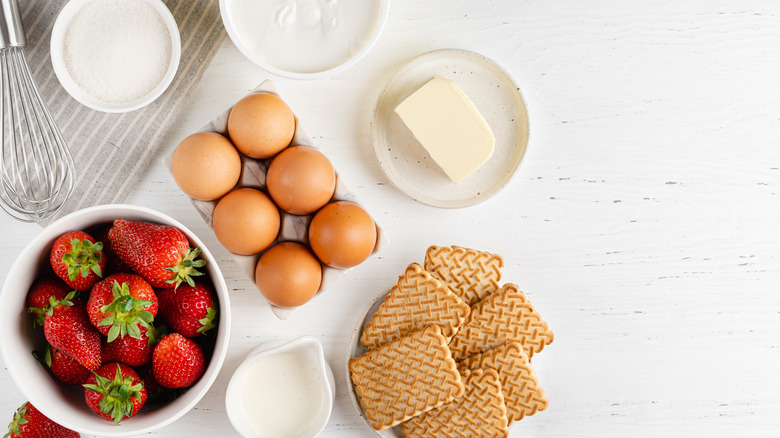Why Your Cheesecake Ingredients Need To Be At Room Temperature
Smooth, dense, and creamy cheesecake is one of the most indulgent desserts out there and is beloved by many with a sweet tooth. Almost impossibly rich due to a base typically incorporating cream cheese, heavy cream, sour cream, and plenty of eggs, cheesecake can range in style from a straightforward New York cheesecake with a graham cracker crust to flavored versions such as pumpkin cheesecake to no-bake varieties whose rich dairy custard sets in the freezer instead of the oven.
If you've ever satisfied a cheesecake craving by baking one at home instead of hitting up your local bakery, then you know that this dessert is a labor of love. If the cheesecake has a crust, it will usually need to be parbaked first (via Sally's Baking Recipes); Then, once it's filled, a cheesecake is often baked inside a water bath in order to maintain a seamless filling with no splits (via Taste of Home). And since cheesecakes are best enjoyed cold, the finished dessert is usually chilled for several hours or overnight before being served.
One more step that tacks some prep time onto a cheesecake recipe? Bringing the filling's ingredients to room temperature before mixing.
Cheesecake batter ingredients blend together better when they're room temperature
Have you ever labored over a from-scratch cheesecake only to cut into it a few hours later and find a lumpy-textured dessert? If so, that might be because you used cold ingredients when making the filling. According to Taste of Home, the cream cheese, eggs, and other filling ingredients that go into a cheesecake batter blend together much more easily when they're at room temperature. Sally's Baking Recipes expands on this, explaining that room-temp eggs, butter, and other dairy ingredients form an emulsion that traps air. When baked, this trapped air expands, producing a fluffy baked good.
When attempting to blend cold dairy ingredients together, items like cream cheese will resist breaking down completely, leaving lumps in the batter. So when getting ready to bake a cheesecake, start by removing cream cheese, sour cream, eggs, cream, and any other filling ingredients from the refrigerator. You can rest assured that your filling will come together smoothly, giving you an opportunity to focus on other cheesecake-baking challenges such as creating that hot water bath.

